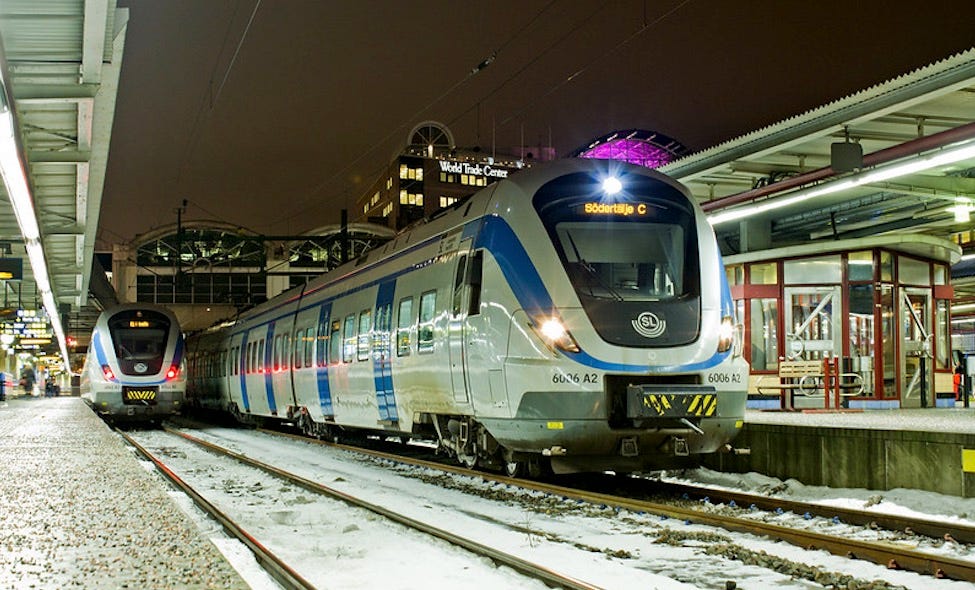Sweden, land of flight-shaming, adds to night train fleet
Expanding EU rail options becomes a priority as Europe looks to limit reliance on short-haul flights

By Elizabeth Hearst
(Elizabeth Hearst is a journalist based in Ireland and a graduate of Dublin City University's Masters of Journalism. She has interned with the Racing Post — the UK and Ireland's top horse-racing newspaper. She has worked for the National Broadcaster RTE at the Irish General Election).
DUBLIN (Callaway Climate Insights) — The Swedish government has greenlit night train routes linking Stockholm and Hamburg and Malmö to Brussels starting in mid-2022, adding another string to the bow of European commitments towards a more environmentally responsible, less plane-focused future.
Minister for Financial Markets Per Bolund described the move as giving the “possibility to discover Europe in the most sustainable possible way,” with the Social Democrat-Green coalition government allocating nearly €30 million for train transport.
The move toward investment in “sleeper services” represents an increased awareness about climate issues. Similarly the need for socially-distanced travel options in the wake of COVID-19 has sparked increased interest in the service.
In an interview with EURACTIV, Karima Delli, head of the European Parliament’s transport committee, welcomed the plan. She said: “I hope this is just the beginning of a whole trend and I look forward to similar initiatives in all member states.”
Similarly, the French transport minister Jean-Baptiste Djebbari has vowed to restore the now defunct overnight train between Paris and Nice as part of the French government’s bailout of state operator SNCF.
Statistics released by the European Commission estimated that more than 9.6 billion passengers travelled on national railway networks in the EU in 2018. In comparison, only 550 million passenger trips took place in the United States.
National rail transport makes up over 70% of total transport in the European Union, with statistics showing that rail transport usage is increasing. In 2017, the EU recorded over 1 billion passengers who traveled by air for the first time, and campaigners are keen to reduce this number and its climate impact by reverting back to trains.
The European revival of night trains comes on the back of calls from night train advocacy group “Back on Track Belgium.” The group is lobbying for Brussels to be established as Europe’s night-train service hub, serving cities such as Barcelona, Malmö, Venice, Warsaw and Prague as well as linking the UK through the Eurostar service.
The rekindling of sleeper service’s across Europe can be seen in the Czech Republic where direct services have been initiated from Prague to the Croatian coastal city of Rijeka. This service runs through five countries, including Slovakia, Hungary and Slovenia, as part of the route.
The European Commission proposed that 2021 will be the “Year of the Rail,” in an attempt to rail as a green, safe and innovative mode of transport which will serve as a key element in the shift to sustainable and smart mobility.
Delli added that “ahead of the European year of railways, it is of major importance to launch or relaunch projects which will make CO2 emissions lower across the EU.”
The drive toward railway transport further bolsters the calls from MEPs to provide European citizens with free rail passes when they turn 18 in an effort to boost interest in travel across Europe and railway travel.
In comparison to their European counterparts, the uptake of railway services remains slow in the U.S. Europe’s 446 million people in 27 countries account for the same number of flight passenger numbers, with the United States recording over 700 million passenger trips by air domestically.
According to the Environmental and Energy Study Institute (EESI), the U.S. accounted for 202.5 million tons (23.5%) of global CO₂ emissions in 2017. The Environmental Protection Agency has estimated that aircraft emissions contribute 12% of the U.S.’s total transportation emissions and accounts for 3% of the nation’s total greenhouse gas emissions.
With climate change and carbon emissions firmly on the agenda in the European Union as a result of the EU’s Green Deal and carbon neutral 2050 strategy, more such transport investing is expected.
Following the United States’ withdrawal from the Paris Agreement, it remains to be seen if the shift to renewable energy, lower carbon emissions and transportation options will be embraced in the U.S.
